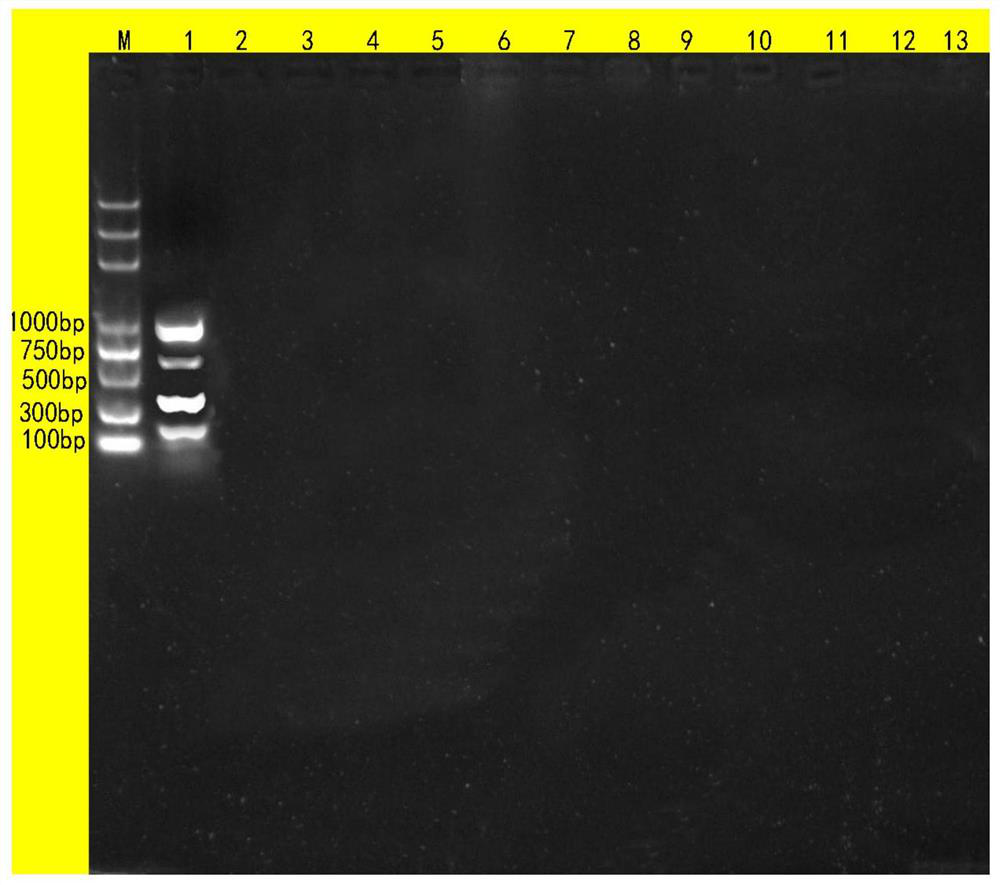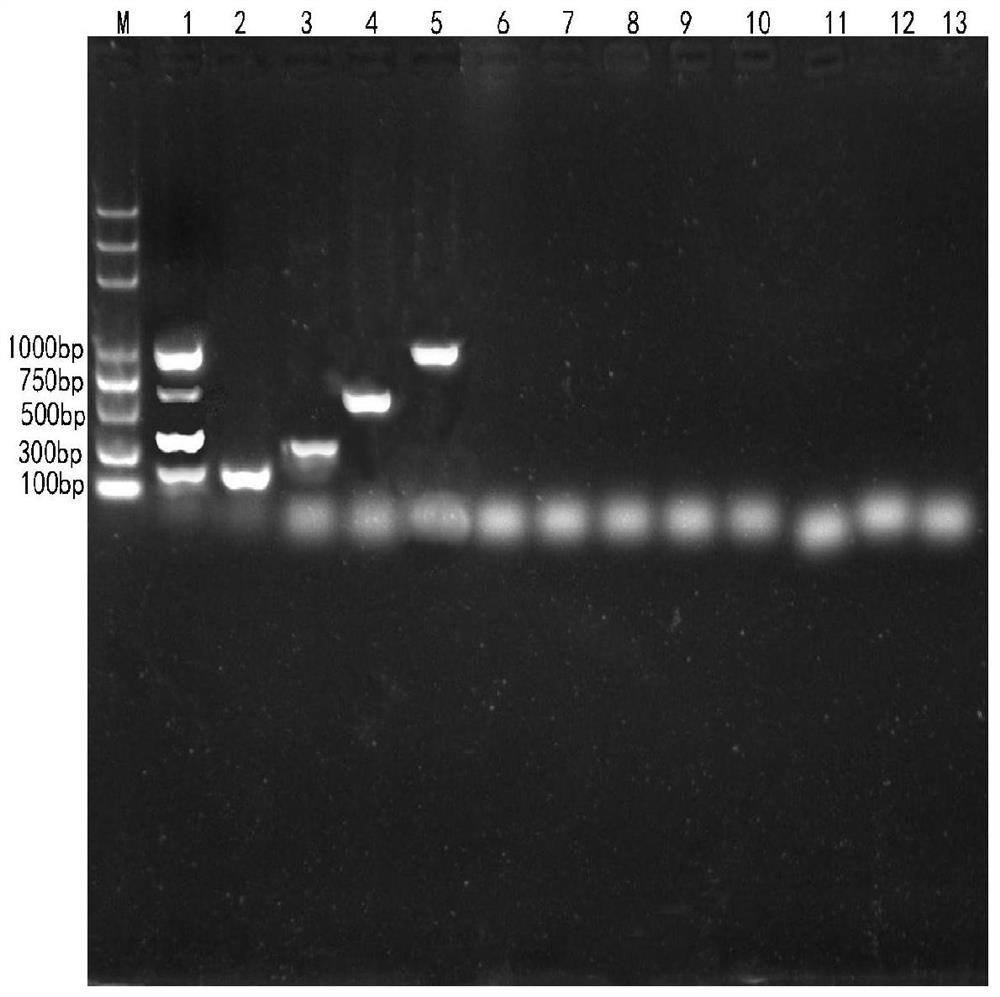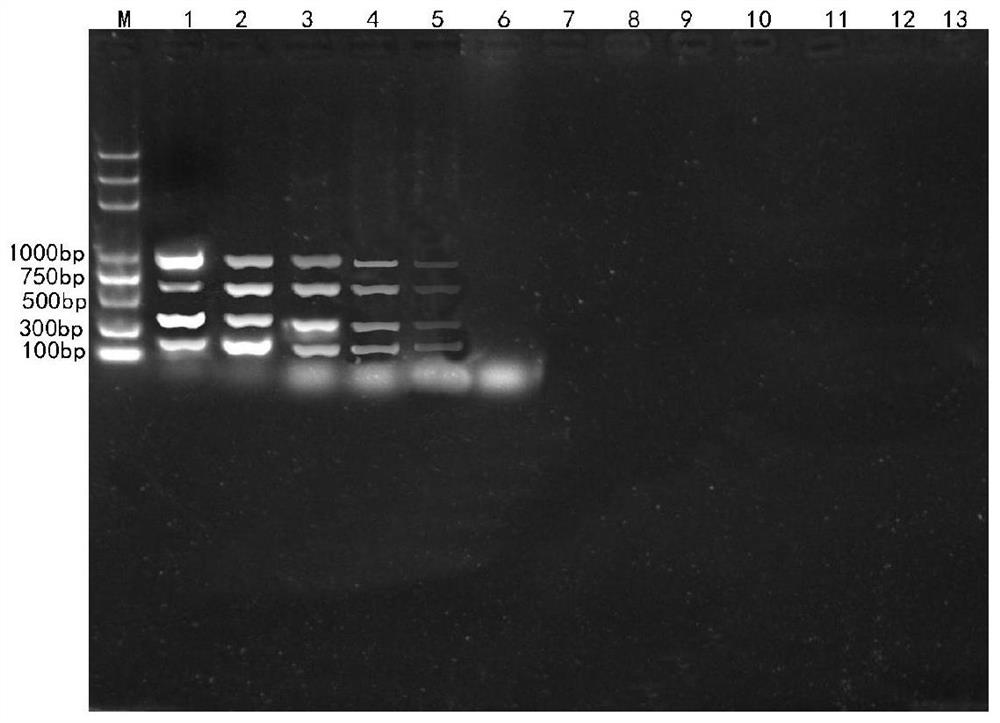Quadruple PCR detection primer group and kit for simultaneously detecting shigella, salmonella, clostridium welchii and escherichia coli
A technology for Salmonella and Clostridium welchii, applied in the field of quadruple PCR detection primer sets and kits, which can solve the problems of economic loss, reduced feed conversion rate, and few patents related to pathogenic bacteria
- Summary
- Abstract
- Description
- Claims
- Application Information
AI Technical Summary
Problems solved by technology
Method used
Image
Examples
Embodiment 1
[0038] The present embodiment provides simultaneous detection of Shigella, Salmonella, Clostridium welchii, a quadruple PCR detection primer set for Escherichia coli, including four pairs of primers, respectively Shigella upstream and downstream primer pairs are respectively SEQ ID NO: 1, SEQ ID NO: 2. The upstream and downstream primers for Salmonella are SEQIDNO:3 and SEQIDNO:4 respectively; the primers for Clostridium welchii type A are SEQIDNO:5 and SEQIDNO:6 respectively; the primers for Escherichia coli are SEQIDNO:7 and SEQIDNO:8 respectively.
[0039] The primers were designed in the NCBI database according to the Shigella (ipah) gene, Salmonella (invA) gene, Clostridium welchii (plc) gene, and Escherichia coli (phoA) gene to extract the corresponding base sequences.
[0040] The primer sequence information is as follows:
[0041]
Embodiment 2
[0042] Embodiment 2 mixed template PCR amplification
[0043] Put 1 μL of templates of Shigella, Salmonella, Clostridium welchii, and Escherichia coli into the mixed system. from the result figure 1Analysis: The results and sizes of the bands of interest shown in the result plots were as expected. In order to prepare for the detection of actual clinical samples in the later stage, the specificity of the established multiplex PCR method was verified.
Embodiment 3
[0044] Example 3 Mixed Template Multiplex PCR Amplification Specificity Experiment
[0045] Utilize the primers and detection method provided by the present invention to carry out mixed template multiplex PCR amplification specificity experiment, specific design is as follows:
[0046] Lane 1: Shigella 133bp + Salmonella 423bp + Escherichia coli 697bp + Clostridium welchii 840bp;
[0047] Lane 2: Shigella 133bp;
[0048] Lane 3: 423bp;
[0049] Swimming lane 4: Escherichia coli 697bp;
[0050] Swimming lane 5: Clostridium welchii 840bp;
[0051] Lane 6: Campylobacter;
[0052] Lane 7: Vibrio parahaemolyticus;
[0053] Lane 8: Staphylococcus aureus;
[0054] Lane 9: Streptococcus;
[0055] Lane 10: Proteus;
[0056] Lane 11: Vibrio cholerae;
[0057] Lane 12: Pseudomonas aeruginosa;
[0058] Lane 13: negative control.
[0059] see results figure 2 : Only Shigella, Salmonella, Clostridium welchii, and Escherichia coli were positive for the target, Campylobacter, Vib...
PUM
 Login to View More
Login to View More Abstract
Description
Claims
Application Information
 Login to View More
Login to View More - R&D
- Intellectual Property
- Life Sciences
- Materials
- Tech Scout
- Unparalleled Data Quality
- Higher Quality Content
- 60% Fewer Hallucinations
Browse by: Latest US Patents, China's latest patents, Technical Efficacy Thesaurus, Application Domain, Technology Topic, Popular Technical Reports.
© 2025 PatSnap. All rights reserved.Legal|Privacy policy|Modern Slavery Act Transparency Statement|Sitemap|About US| Contact US: help@patsnap.com



